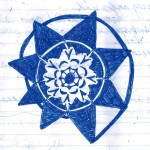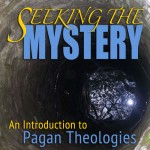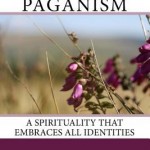There is a flower within my heart,
Daisy, Daisy,Planted one day by a glancing dart,
Planted by Daisy Bell.
Whether she loves me or loves me not
Sometimes it’s hard to tell;
And yet I am longing to share the lot
Of beautiful Daisy Bell.
Few people know that Harry Dacre, the author of the song Daisy Bell, was an accomplished alchemist. He was a shy and retiring man – indeed Harry Dacre was a pseudonym for Frank Dean, his real name. Another artist recorded the song which was to be his chief monument in the world – but what a song: one that clearly shows that he attained that rarest of gifts, the crowning glory of the Great Work of the alchemist.
!["Daisy Greville, Countess of Warwick" by The Lafayette Studio - [1]. Licensed under Public Domain via Wikimedia Commons - https://commons.wikimedia.org/wiki/File:Daisy_Greville,_Countess_of_Warwick.jpg#/media/File:Daisy_Greville,_Countess_of_Warwick.jpg](https://wp-media.patheos.com/blogs/sites/311/2016/04/Daisy_Greville_Countess_of_Warwick-211x300.jpg)
The flower was planted in the singer’s heart by a glancing dart from Daisy Bell. A dart is a kind of arrow, and the arrow usually represents sexual attraction, being the weapon of the god Eros or Cupid; but the arrow can also represent knowledge, and perhaps has a dual meaning here of both erotic attraction and mystical knowledge.
The singer does not know whether or not the Soror Mystica loves him, but he is longing to share her lot. These lines emphasise the chancy and difficult nature of the Great Work, and the difficulty of attaining the hidden knowledge, which is greatly longed for by the alchemist, of course.
The song is addressed to a Miss Daisy Bell, clearly a reference to both the Soror Mystica of alchemy, and both the goal of the Great Work, and the means by which it is attained.
Who is the Soror Mystica?
Sorora Mystica literally translates to Mystical Sister, and she is the sole assistant to the Alchemist. She brings the balancing force of feminine and masculine principles in the physical and psychic work of the Alchemical process. She is the assistant to the chemical work and the mirror for which the Alchemist reflects. She is a vehicle for transference and the key to the Alchemist’s individuation.
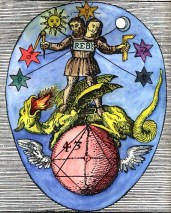
Let me explain. The name Daisy is a pet name for Marguerite, which is a kind of daisy. The name Marguerite is also derived from Margaret, which means ‘pearl’. The pearl is obviously a reference to the pearl of great price, which is the enlightenment sought by mystics, occultists, and alchemists – the goal of the Great Work. In The Parable of the Pearl, a man hears that a beautiful pearl is hidden in a field, and sells everything he has to buy the field. Perhaps the pseudonym that the author used was a punning reference to this field: Harry Dacre = “arid acre”.
The name “Bell” clearly represents a bell-jar or some other alchemical vessel, the hermetic vessel inside which the alchemical process must be sealed in order for the Great Work to succeed. The fact that a bell is cast by metal-workers (often regarded in earlier times as magicians), and that the outer symbol of the Great Work was making gold from base metals, also adds to the alchemical associations.
According to the Virtual Victorian,
The Daisy he described was said to be based on the Countess of Warwick, Frances Evelyn ‘Daisy’ Greville.
Daisy was a champion of women’s rights, and also a mistress of the Prince of Wales.
The Prince of Wales clearly represents the King in the alchemical process. The fact that Daisy Bell was a mistress, and therefore someone to be concealed, again emphasises the interior and hidden nature of this mystery.
Daisy, Daisy, give me your answer, do,
I’m half crazy all for the love of you.
It won’t be a stylish marriage,
I can’t afford a carriage,
But you’d look sweet upon the seat
Of a bicycle made for two.
The first line of chorus (the best-known part of the song) implores Daisy to give him the answer. Clearly he is not just seeking her hand in the mystical marriage, but also the completion of the Great Work of Alchemy – not just an answer, but The Answer.
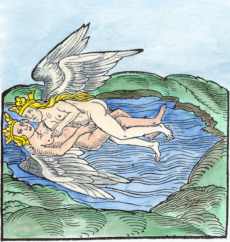
The chorus continues, “I’m half crazy all for the love of you”. This clearly represents the idea that alchemists were regarded as mad by the rest of the world, because they were apparently seeking the impossible – the transformation of lead into gold – but what the world did not realise was that the transformation of lead into gold was an elaborate metaphor for the transmutation of base matter (the lumpen soul of the untranscended self) into divine spirit or gold (the symbol of the imperishable, immortal soul infused with divinity). So although alchemists appeared mad, they were in fact eminently sane – hence the phrase “half crazy”.
The next line is “It won’t be a stylish marriage” – there is little outward show to demonstrate that the Great Work is proceeding, hence it won’t be stylish – but alchemists used the symbol of a marriage (of a king and queen) to represent the union of the masculine and feminine principles within the psyche.
At this point, the author injects a little humour – “I can’t afford a carriage” – perhaps because he has spent so much money setting up his alchemical laboratory; or perhaps, on a more serious note, because he shuns worldly success and seeks only spiritual riches.
The last two lines of the chorus are a very clever modern adaptation of the ancient alchemical symbol of the Beast With Two Backs (a euphemism for a couple making love) which was a symbol of the Chymical Wedding, Hieros Gamos, or Sacred Marriage. The Soror Mystica is enthroned upon the seat of a bicycle of made for two.
We will go tandem as man and wife,
Daisy, Daisy,
Ped’ling away down the road of life,
I and my Daisy Bell.
When the road’s dark, we can both despise
P’licemen and lamps as well.
There are bright lights in the dazzling eyes
Of beautiful Daisy Bell.
In the second verse, Mr Dacre emphasises the equality of the partnership between the alchemist and the Soror Mystica, going tandem as man and wife; he will despise policemen (symbols of exoteric ethics and external laws, which the mystic does not need because he or she is guided by the divine will from within) and lamps (symbols of exoteric wisdom, which he does not need because he is illuminated by the divine light shining forth from the eyes of the beloved Soror Mystica).
I will stand by you in weal or woe
Daisy, Daisy,
You’ll be the bell which I’ll ring, you know,
Sweet little Daisy Bell.
You’ll take the lead on each trip we take.
Then if I don’t do well
I will permit you to use the brake,
beautiful Daisy Bell
In this verse, like the medieval knights who followed the mysteries of Courtly Love, the singer pledges his loyalty “in weal or woe”, and invites her to take the lead and use the brake – he submits to her inner guidance – and perhaps here she represents the Anima, his inner feminine self (of whom the Soror Mystica is usually the outward representation).
Harry Dacre carefully encoded an alchemical mystery in the lyrics of the song, and then set it to a catchy tune in the hope of imbuing the popular consciousness with the occult mysteries of alchemy. Of course, if you look at the subsequent explosion of feminist ideas, magical ideas, then he clearly succeeded beyond his wildest dreams. Because everyone knows this song – right? And every time you sing it, you are praising the mystical qualities of making the Beast with Two Backs, and furthering the Alchemical Great Work.


